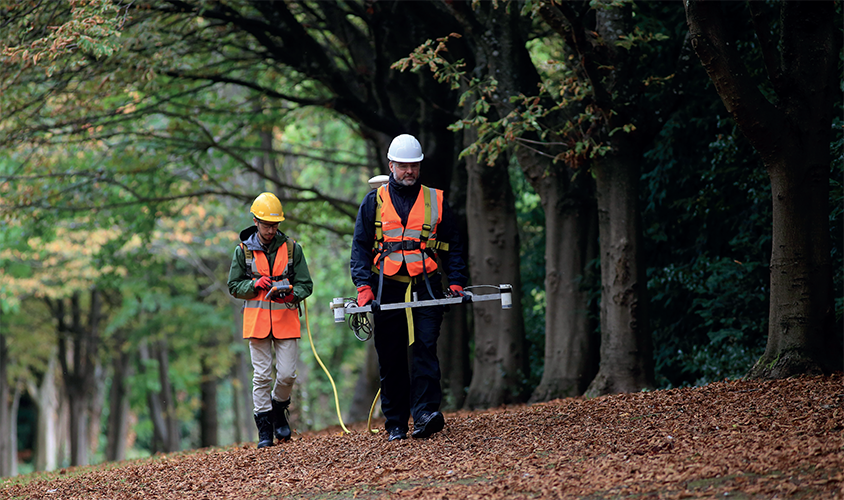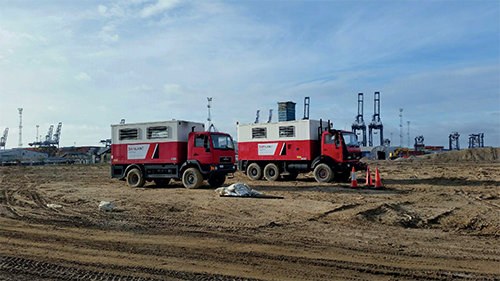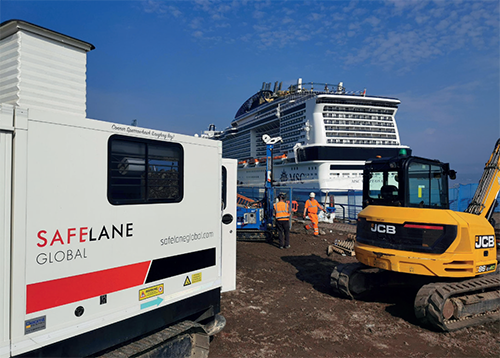
SafeLane Global
Safety first
With decades of experience in the mitigation and clearance of unexploded ordnance, SafeLane Global is an essential player within the UK construction industry
Established over 30 years ago, SafeLane Global (SafeLane) was previously known as BACTEC International. Specialising in the mitigation and clearance of risk from unexploded ordnance (UXO), BACTEC quickly established itself as a leader in its field, and was among the very first private companies to be involved in demining operations overseas. Following a restructuring process in 2018, the company rebranded as SafeLane Global, with a pledge to continue in the safe and sustainable realisation of its clients’ commercial, governmental and humanitarian aspirations.
 Today, the crux of SafeLane’s domestic business in the UK is the support it provides to intrusive works within the construction industry. “It’s about saving people’s lives,” says Nigel Barton, Technical Field Manager at SafeLane. “At the end of the day, people in construction have suffered accidents, or have been killed over the years, because of UXO. Our role is to mitigate against that eventuality, beginning with an initial desktop study, working out what threat there is, if any, and providing evidence for that through risk assessments. We’ll then make a recommendation, and if needed, execute the mitigation, either in the form of intrusive surveys, or using non-intrusive scans to search for variations in the earth’s natural magnetic field caused by bombs, bullets or artillery rounds.”
Today, the crux of SafeLane’s domestic business in the UK is the support it provides to intrusive works within the construction industry. “It’s about saving people’s lives,” says Nigel Barton, Technical Field Manager at SafeLane. “At the end of the day, people in construction have suffered accidents, or have been killed over the years, because of UXO. Our role is to mitigate against that eventuality, beginning with an initial desktop study, working out what threat there is, if any, and providing evidence for that through risk assessments. We’ll then make a recommendation, and if needed, execute the mitigation, either in the form of intrusive surveys, or using non-intrusive scans to search for variations in the earth’s natural magnetic field caused by bombs, bullets or artillery rounds.”
The company is currently undertaking UXO mitigation at two sites, in London Euston, and Saltley, Birmingham, in support of the High Speed Two (HS2) rail line. As one of the largest and most complex infrastructure projects ever undertaken in the UK, SafeLane’s involvement speaks to its wealth of experience. “Our work for HS2 is a challenge, but an enjoyable one,” Nigel tells us. “Saltley, in particular, has posed some really difficult conditions. Originally the site of a warehouse storage facility by the railway line, the ground is absolutely horrendous.”
“We’ve been in this business for more than 30 years,” continues Lucie Tiverrier, General Manager at SafeLane. “With that experience comes unique capabilities, whether it’s our bespoke in-house software modelling, or the fact that we have our own assets, be it survey rigs, or detection equipment. The construction industry is very dynamic – it changes from one day to the next. If we’re suddenly required on-site tomorrow, we can be. If that site is in London, we can be there within the hour from our workshop in Kent. Our competitors can’t say the same.”
Among SafeLane’s unique offerings is what’s known as its TFG methodology for the delivery of intrusive UXO surveys. “A lot of companies, including ours, have the capability to perform intrusive surveys with cone penetration test (CPT) probes,” Nigel explains. “A CPT probe is an effective tool for surveying down to ten metres over a very open site, with ideal ground conditions. But in and around London, when you come to a site that’s crowded with existing structures or foundations for other buildings, where the strata of the ground can’t support a normal rig, or where access is a problem, then you need something different. In those environments, our TFG method is an unmatched solution.”
The true bedrock of SafeLane’s success is the depth of its human resources. “Our Explosive Ordnance Disposal (EOD) engineers are all either highly trained ex-military, or skilled and qualified civilians,” Nigel notes. “On every site visit, they’ll dynamically assess the different conditions, updating our risk assessments in accordance with the particular nature of the task. There’ll always be a senior site manager present, hosting regular toolbox briefings tailored to ensure that each member of the client’s team is fully up-to-speed.”
In October 2021, the UK Government published its ‘Net Zero Strategy: Build Back Greener’, setting out its proposals for the decarbonisation of the UK economy, with the aim of achieving its Net Zero target by 2050. SafeLane is ahead of the curve, however, boasting an extensive track-record when it comes to applying its expertise within the burgeoning renewables sector. “Where are solar developments built?” Lucie asks. “The answer: in flat, open spaces in the countryside, including former airfields. Naturally, those sites require clearance, and that’s where we’re involved.”
One such project was SafeLane’s work at EDF’s Dorenell Wind Farm, a 59-turbine site in Moray, Scotland, located atop a former World War II live-firing range. “It was an extraordinarily challenging operation,” Nigel recalls. “The peat hags and brambles made a non-intrusive scan impossible, while the site’s location on a mountain completely threw off our magnetometry. As a result, we had to carry out practical search and clear operations on-foot, with our EOD engineers using handheld magnetometer equipment to sweep an area of roughly 200-square-kilometres. It took approximately a year and a half!”
Few businesses were left unscathed by the Covid-19 pandemic. But for SafeLane, the work never stopped. “We had an initial two-week period of uncertainty,” Nigel admits. “Very quickly, however, we saw a rapid distribution of information from the Construction Leadership Council on how to implement Covid-19 mitigation methods. We received that, adapted our protocols, amended our plans, and within a couple of weeks our teams were back on site working to the guidelines.”
“Now, the construction pipeline is very strong again, with a lot of projects starting out, so our goal is to carry on supporting our clients,” Lucie adds. “At SafeLane, we’re always looking at the efficiencies of our kit, our software, and working on our research and development across the board for our land and marine business units. Technology keeps on moving, and the solutions available on the market today are amazing. We’re currently trialling a new set of probes, with the intention of maximising our productivity in especially arduous conditions. Beyond that, we have exciting plans in terms of mergers and acquisitions, and we’ll be investing in new assets that offer improved emission control.”
SafeLane Global
www.safelaneglobal.com
Services: UXO risk mitigation and clearance